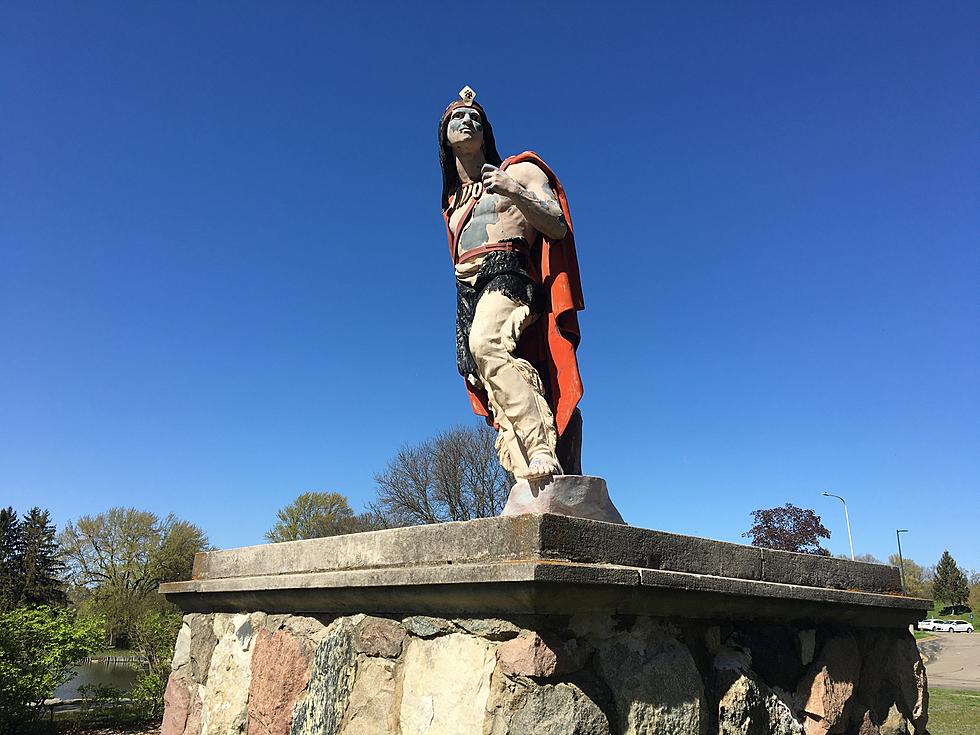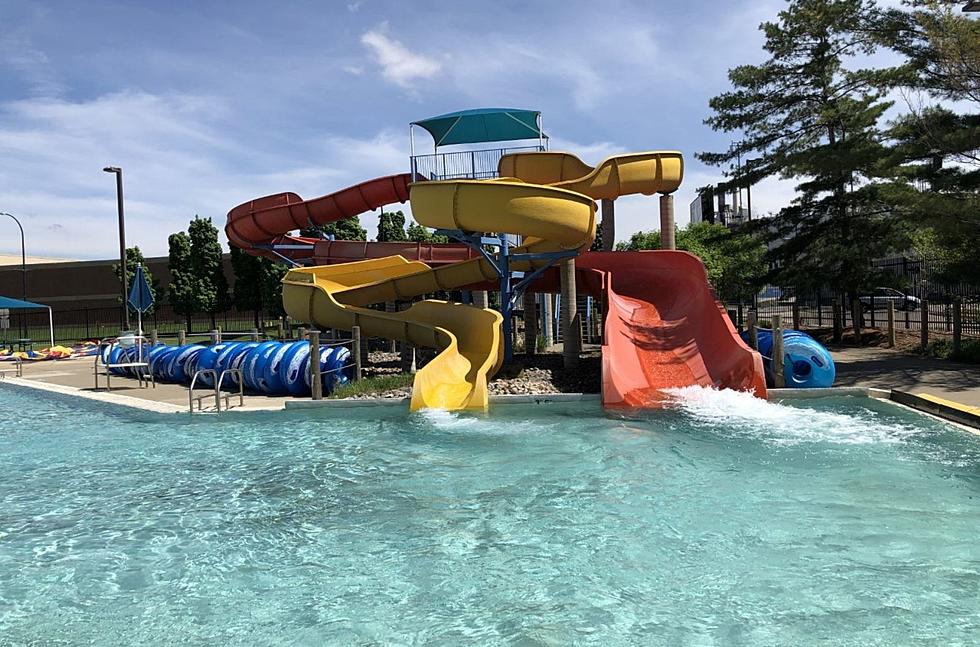
City of Battle Creek Removes Irving Park Indian Statue
You might not have noticed, but the Native American statue at Irving Park is gone. City crews removed it earlier this week, by order of City Manager Rebecca Fleury. The six-foot-tall statue has been on a five-foot-tall fieldstone pedestal, just a few hundred feet away from the nearly 500-year-old white Oak at Irving Park for the last 56 years.
Fleury said there are several reasons for having the statue moved into storage. Paint is peeling badly from it and Fleury said she’d heard from several citizens and city staff over the past couple of years suggesting that it needed considerable maintenance. “There were also concerns about kids playing on it, which isn’t safe,” said Fleury. She said she also heard from the local tribe, who had concerns of their own. “The tribe didn’t find the statue disrespectful, but their concern was that it doesn’t accurately depict someone from our area,” said Fleury. “I wondered if it was a locally commissioned work of art, but when we checked into it, we found was just a factory reproduction, and not even of great quality.”
Indeed, there are at least a dozen more like it around the country, including one in Ishpeming, Michigan. The statue was cast from a mold at the J.L. Mott Iron Works of Trenton, N.J.

Mayor Mark Behnke announced that the statue would be coming down on his city report on Saturday on WBCK radio. Behnke said he was told it would be placed into storage after the statue was offered to the Battle Creek Regional History Museum. He said the museum couldn’t accept it because of the costs to repair and refurbish it.
The statue, an impressive Native American man wearing an eye-catching red shawl, was moved from McCamly Park to Irving Park in 1965.
According to a Battle Creek Enquirer article from March 27, 1957, the moving spirit behind the creation of the monument was Alderman LeVant D. Hobbs, who was a chairman of the parks committee after the turn of the last century. It was purchased by the city as a tribute to the Native Americans who were friends with Battle Creek pioneer and abolitionist Sands McCamly. It was believed that they stopped regularly in Battle Creek to trade with McCamly and other settlers. Some called the statue “Hobb’s Folley” because they felt too much was paid for it.
J.L. Mott patterned the zinc statues after wooden “cigar store Indians” and this particular likeness of a Cherokee tribe member was listed in an 1872 catalog as “No. 53 Indian Chief”. Frederick Fried, a legendary restorer of historic carousels, calls No. 53 Indian Chief “an extremely large figure endowed with great dignity” in his book, “Artists in Wood.”
According to Willard Library, the Battle Creek statue has had some dubious names, besides Hobb’s Folley. “Through the years, the landmark statue in Irving Park has been called Hobb's Indian, Irving, the Battle Creek Indian Statue. Old Sandy, and Chief Hole-in-the-Head.” (a hole was somehow put into the back of the head of the statue at some point in it's long history.)
The library notes that in 1977, Sandy Byrd, then a summer employee for Battle Creek parks, restored the statue's faded glory with a coat of paint. 44 years later, it remains to be seen what will happen now to the old statue, but Fleury says they’ll listen to ideas. Meanwhile, she says they’d be more interested in hearing ideas for a new statue that more accurately represents the Native Americans who may have actually walked under that 500-year-old oak tree at Irving Park.
Native American Statue Removed in Battle Creek
LOOK: 15 Discontinued McDonald's Menu Items
More From WKMI









